Pythagoras Theorem – GCSE Maths
Introduction
- The Pythagorean Theorem is a simple rule that helps us figure out the length of one side in a right-angled triangle if we know the other two.
- It is one of the most fundamental and well-known principles in geometry.
- It is widely used in mathematics, physics, engineering, and everyday problem-solving to calculate distances or unknown side lengths.
Real-Life Application:

What is Pythagoras Theorem?
- In a right-angled triangle, the square of the hypotenuse is equal to the sum of the squares of the other two sides.
- Mathematically, if a right-angled triangle has sides of lengths a, b, and c (where c is the hypotenuse), then:
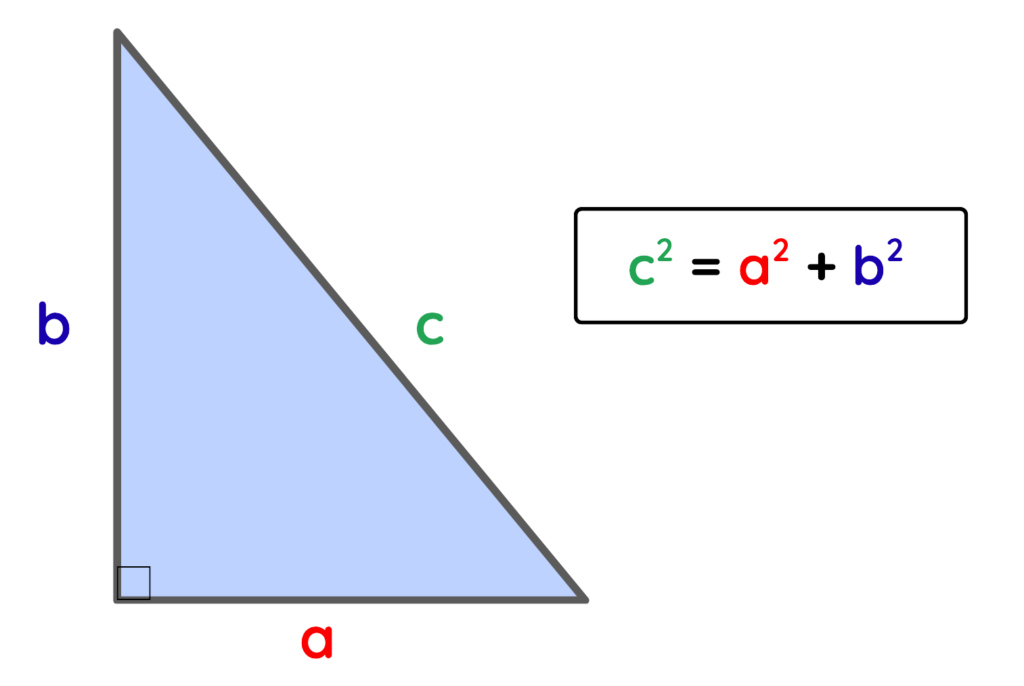
Key points:
- Applies Only to Right-Angled Triangles
- Hypotenuse is the Longest Side
- It helps to find the length of any side when the other two are known.
 Solved Example
Solved Example
Problem: A triangle has one side 6 cm long, another side 8 cm long, and a right angle between them. What is the length of the hypotenuse?
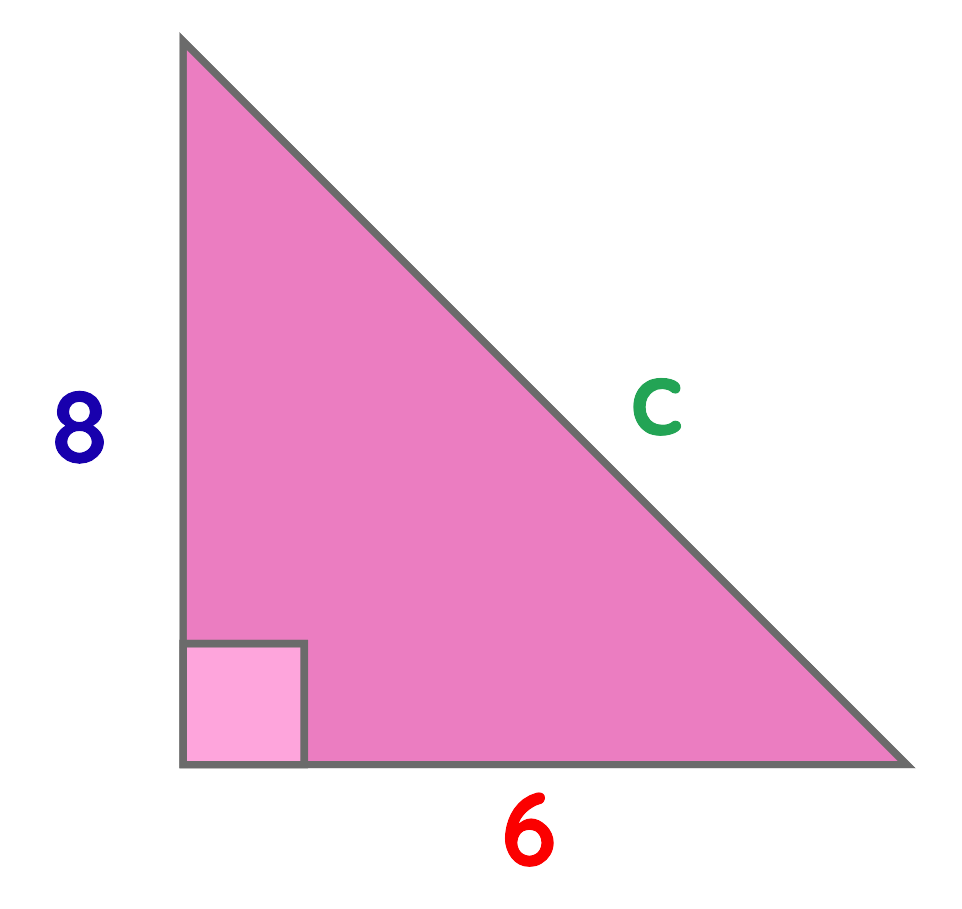
Solution:
Step #1: Given
- Base a = 6 cm
- Height b = 8 cm
Step #2: Using the formula:

Step #3: Plug the values:
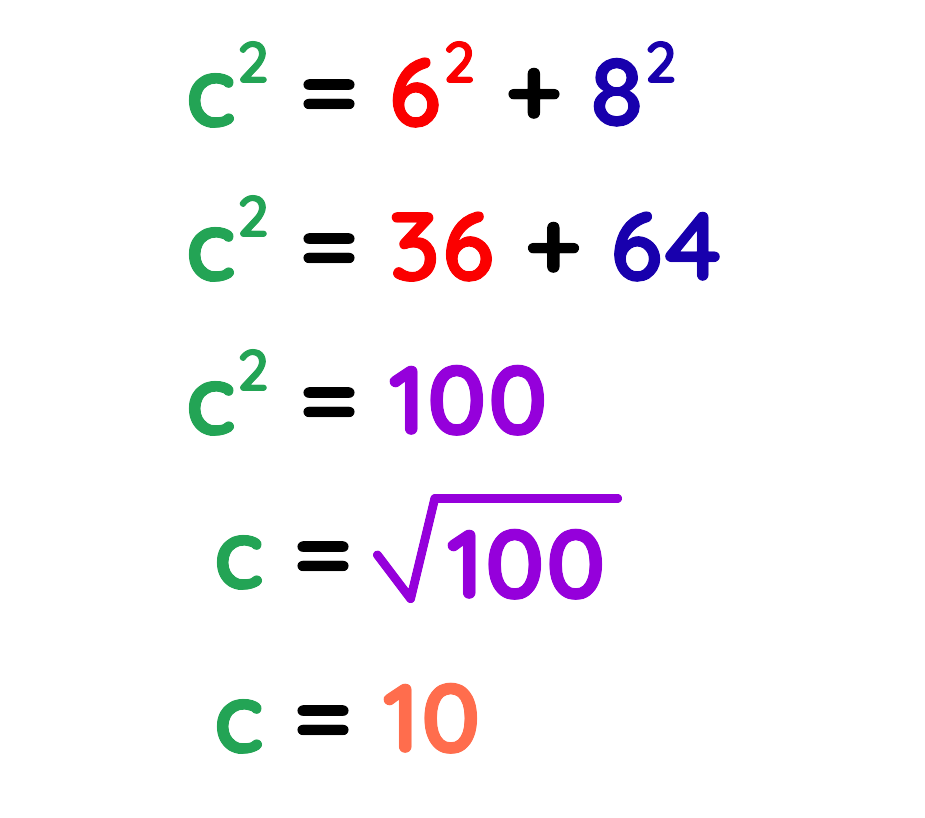
Final Answer: C = 10 cm
How To Find The Length of The Missing Side in a Right-Angled Triangle?
- The Pythagorean Theorem helps find a missing side in a right-angled triangle when two sides are known.
Steps to Find Missing Sides in a Right-Angled Triangle:
- Step#1: Identify the given sides
- Step#2: Use the formula
- Step#3: Plug the values
- Step#4: Solve for the unknown side.
 Solved Example
Solved Example
Problem: A right-angled triangle has one side 9 cm and another side 12 cm. What is the length of the hypotenuse?
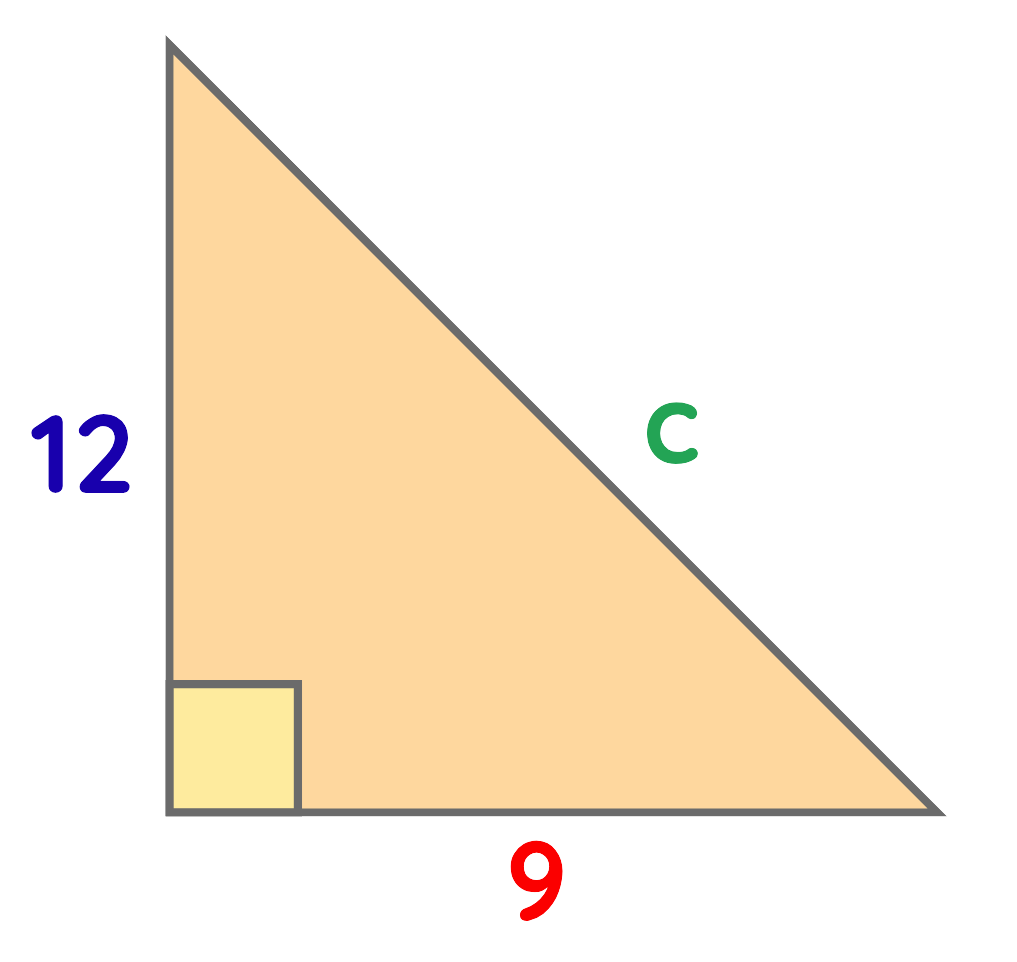
Solution:
Step#1: Identify the Given Sides:
- Base a = 9 cm
- Height b = 12 cm
Step#2: Use The Formula:

Step#3: Plug the values:

Step#4: Solve for the unknown side:
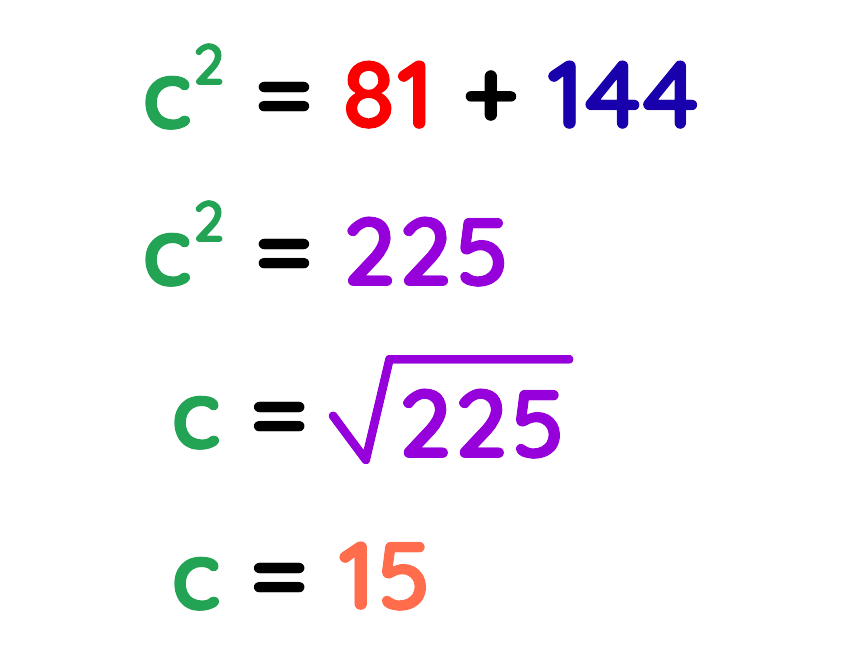
Final Answer: C = 15 cm
 Solved Example
Solved Example
Problem: In a right-angled triangle, the base is 7 cm and the height is 24 cm. Find the length of the hypotenuse.
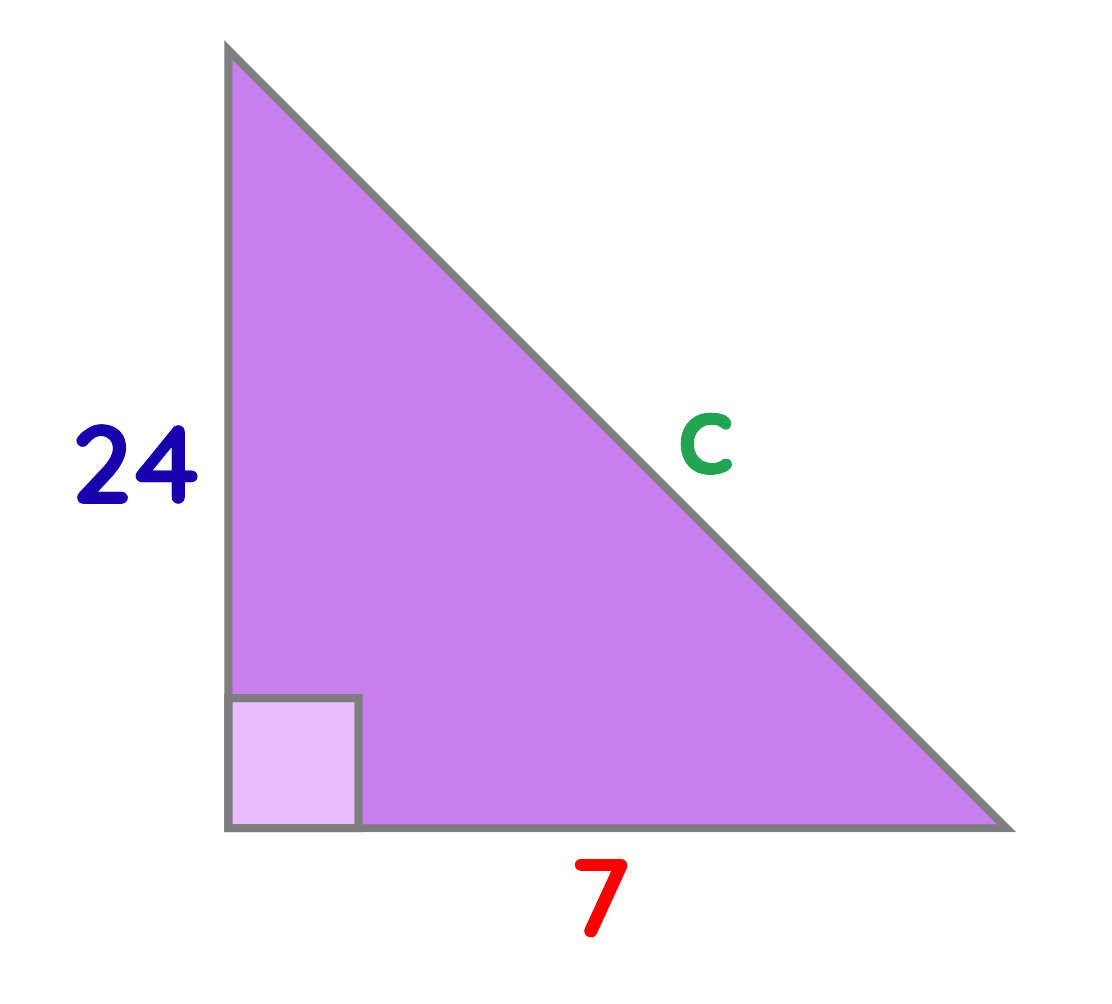
Solution:
Step#1: Identify the Given Sides:
- Base a = 7 cm
- Height b = 24 cm
Step#2: Use The Formula:

Step#3: Plug the values:

Step#4: Solve for the unknown side:
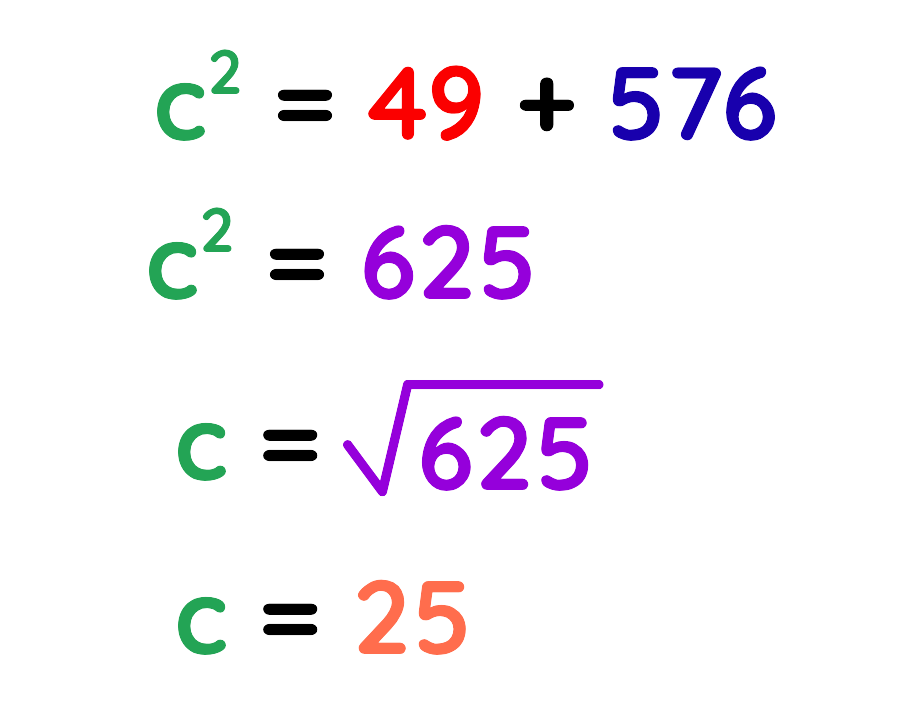
Final Answer: C = 25 cm
 Solved Example
Solved Example
Problem: A right-angled triangle has a hypotenuse of 13 cm and one side of 5 cm. What is the length of the other side?
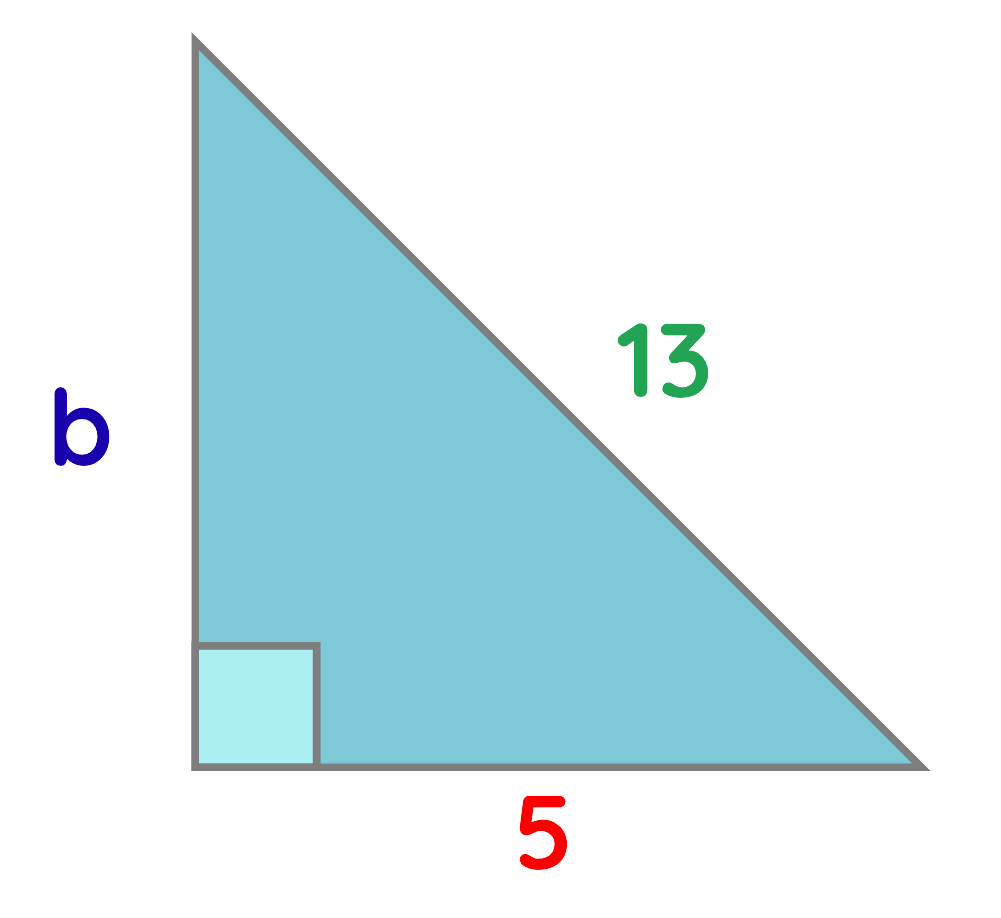
Solution:
Step#1: Identify the Given Sides:
- Base a = 5 cm
- Hypotenuse c = 13 cm
Step#2: Use The Formula:

Rearrange it,

Step#3: Plug the values:

Step#4: Solve for the unknown side:
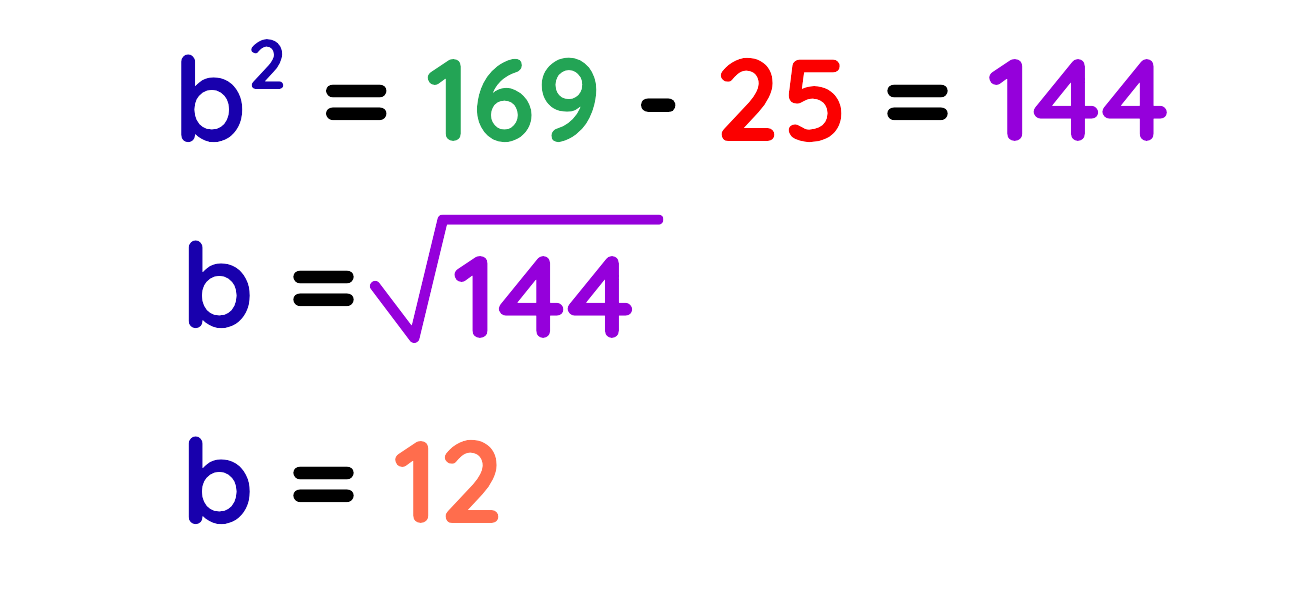
Final Answer: B = 12 cm

